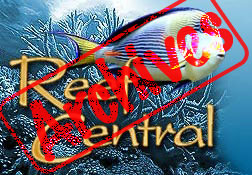

|
|
|
#1
|
|||
|
|||
|
How long are your tank lights on???
the title says it all- I have a red slime algae problem and I spoke to someone at my LFS and all of the sudden it just hit me. I used red slime remover on my tank yesterday and the guy told me that it really is the worst thing for the tank because it takes away good bacteria and nutrients and the slime is going to just keep on coming back. He told me to cut back on light and feeding and during water changes siphon out as much slime as I can. Many people on reefcentral had told me to be careful about chemicals but I didnt listen- My corals and fish are fine but I guess I just had to literally hear it from someone. =)
So anyways, how long are your tank lights on (if you have corals and fish, because I have a mixed reef)
__________________
Matt |
|
#2
|
|||
|
|||
|
10 hours for the 10,000K, and 12 for the act.
__________________
If all else fails read the instructions, if that dosen't work get a bigger hammer |
|
#3
|
|||
|
|||
|
I have 8 hours, 10 with actinics.
__________________
Matt |
|
#4
|
|||
|
|||
|
Quote:
|
|
#5
|
|||
|
|||
|
8:30AM-9:30PM
__________________
Growing old is manditory, growing up is optional. |
|
#6
|
|||
|
|||
|
I run my MH for 10 hours,
VHO Actinics for 12.
__________________
Member of the Upper Peninsula of Michigan Marine Aquarium Society! www.upmmas.com |
|
#7
|
|||
|
|||
|
One HQI pendant on for 8 hours, the other on for 8 hours, at 4 hours apart for a total photoperiod of 12 hours. There is more to red slime algae than lighting though. Red slime is actually a bacteria and feeds on nutrients, mainly nitrates. I have had issues with this as well and one thing I do know is it can be tough to get rid of!
|
|
#8
|
|||
|
|||
|
Quote:
__________________
Some people say, "How can you live without knowing?" I do not know what they mean. I always live without knowing. That is easy. How you get to know is what I want to know. - Richard Feynman |
|
#9
|
|||
|
|||
|
so I have too many or too little nutrients?
and if my nitrates are high how do I lower them? Water changes
__________________
Matt |
|
#10
|
|||
|
|||
|
Quote:
|
|
#11
|
|||
|
|||
|
I run my atinics 12hrs
10,000k I run 10hrs |
|
#12
|
|||
|
|||
|
are you using RO/DI water?
|
|
#13
|
|||
|
|||
|
yes I dont use tap water--
__________________
Matt |
|
#14
|
|||
|
|||
|
both daylight and actinic for 10 hrs
I leave my moon lights on 24/7 but that doesnt effect anything i dont thinkg |
|
#15
|
|||
|
|||
|
8 hour metal halide.
__________________
You know, DOTZ, like the candy you put in your mouth. |
|
#16
|
|||
|
|||
|
I run actinics for 12, mh's for 9.
|
|
#17
|
|||
|
|||
|
Quote:
__________________
"I plan to live Forever, so far, so good" |
|
#18
|
|||
|
|||
|
i was planning on 6hrs for my MH's and 1hr before and after for my antics
__________________
first 55gallon on its way. full of green stuff now |
|
#19
|
|||
|
|||
|
I run my actinics 11am - 11pm, MH 1pm - 8pm.
IMHO cyano and light aren't that closely related. Cyano can fix atmospheric nitrogen, meaning it doesn't need NO3 in the water in order to grow, so concentrate on starving it of phosphate. You could try a phosphate reactor, a refugium full of chaeto or caulerpa or some phosphate adsorbing resin in a HOB or canister filter. I use a refugium, and it works very nicely -- NO3 and PO4 are always undetectable.
__________________
"The cure for anything is salt water: sweat, tears, or the sea." - Isak Dinesen |
|
|